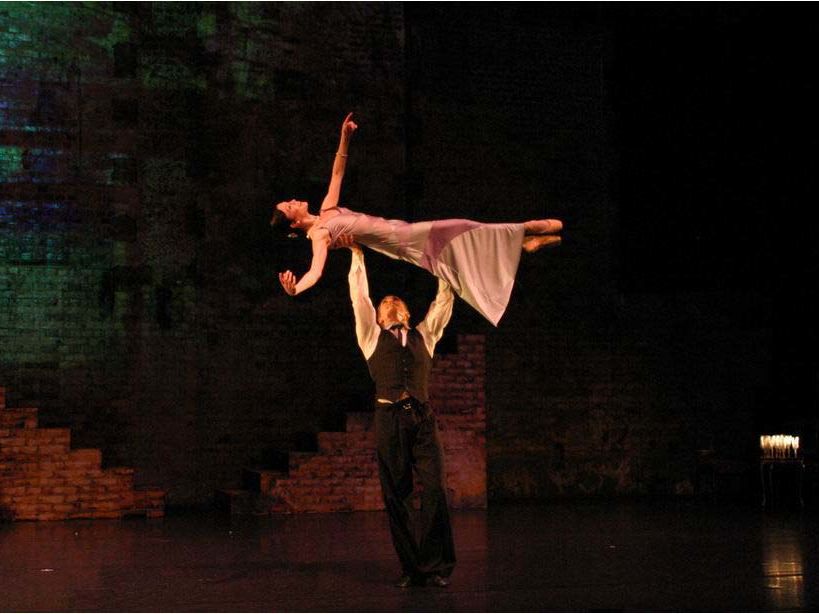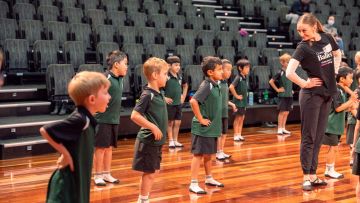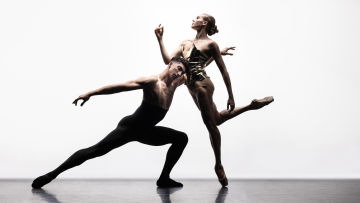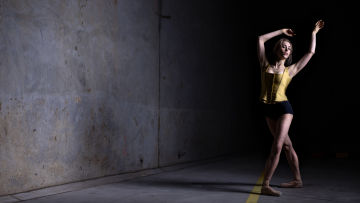Entrechats with Tony Lewis
Tony Lewis is your classic small town to big city success story. A sports lover from the beginning, he discovered dance by accident in his home town of Ayr, leading him to develop his talent for ballet partnering. He eventually became a Principal Artist with Queensland Ballet, before retiring from the stage to pursue his fitness career.

How did you discover dance?
When I was younger, I did karate on and off for 6 years. I noticed one of the guys I’d been training with was improving – his flexibility got better, his kicks were higher and all his moves were a lot crisper. I approached him and asked him what secret training he was doing on the side, and he said ‘don’t tell anyone, but I’ve been doing jazz and limber classes’. I decided I wanted to go with him.
One of the girls in these classes asked if I’d dance with her for a local production, so I agreed, thinking nothing of it. After my first performance I was asked to do it again, and that’s where the notion of doing ballet came into my head. At the time, I was very anti-ballet, but I was convinced to give it a try. There was a teacher at my ballet class, Neil Walker, who started talking to me about all these successful male dancers he’d taught. That’s when I knew there was something to this.
18 months later, at age 17, I moved to Melbourne to train full-time.
How was your training experience?
I didn’t like living in Melbourne for the first six months. How I handled situations in my hometown of Ayr wasn’t tolerated in Melbourne – I was used to speaking my mind, so I had to learn to keep my mouth shut!
I attended National Theatre Ballet School in St Kilda. When I started, I was used to being the only male dancer in a ballet school, but on my first day I met all these other male dancers. To suddenly be in a room where everyone was better than me was a really big thing. I decided to treat it like a competition – I picked my targets and went for them. Rural kids in the 80’s didn’t get many opportunities. I knew there was nothing for me back in my home town, so I needed to give this my best shot. The other guys in my class were my motivation. We were terrific friends in 1986 and are still great mates now.
A year later, I was accepted into the Australian Ballet School, where I trained for three years.
Did you end up sticking with the karate?
That’s the funny thing! My parents sat me down and said something had to go. I was also playing rugby league, golf, cricket, gymnastics… I pretty much gave everything away for dance. I played a lot of other sports and was good at them, but when you made a national team that was it. With dance I couldn’t identify the end point – It was a matter of asking how far I could actually push myself, and that really appealed to me.
Who were your mentors during this time?
While I was training at ballet school I naturally picked up an ability for pas de deux. I was fortunate to have a great teacher and mentor in Kelvin Coe, and I looked up to Stephen Heathcote in studying his rehearsals and performances. I absorbed all they could offer me and then left Australia to work in Europe. I ended up being the first dancer Francois Klaus ever employed in his first directing job! He had a great reputation as an actor / dancer, but also an incredible partner. I was also fortunate to work with Paul de Masson, who had been with the Australian Ballet and was also a fantastic partner. All these artists really got behind my passion to be the best I could be at partnering, and I eventually built my career on that ability.
How was your dance career, and when did you decide to transition into the fitness industry?
I was dancing in Europe for three years. My wife and I re-acquainted there after losing contact in Melbourne while we were both training. Our relationship took off, and so did our careers. We eventually joined the same Company together and moved back to Australia in 1993. We’d both wanted to work for Queensland Ballet – it was the first ballet Company I ever saw (also, probably a little desire to represent my home State!). We moved back and danced under Harold Collins until Francois took over directorship in 1998.
I retired from the stage in 2003. A year before, I had an ACL reconstruction surgery and I wasn’t able to dance. I was adamant that I wouldn’t let that finish my career – I fought hard to go back to it, but after my daughter was born prematurely, I realised there were other important things in life. When I decided it was time, I met with Paul Boyd, who spoke to me about a piece he wanted to create, Jeckyl and Hyde. The stars aligned and it was a great way for me to finish. The words from Kelvin were in the back of my head: ‘Always leave them wanting more’. I was happy with my career; I’d done everything I wanted to do, and more. I had a wonderful family and had started to map out my next move. After finishing on stage, I went straight into the fitness industry.
How has the world of fitness changed your life?
Getting up in the morning at 4.30am every day for four years was so hard! I soon felt I needed a break and tried a bit of real estate, but I found myself sitting down at people’s kitchen benches talking about their health and fitness, so I decided to start my own business.
We started at home 10 years ago. Initially we’d drive the car out the garage and then over time we refurbed all of it to turn into a gym. Many of my clients came to me from the gym I worked at before. I love this career because everyone presents you with something different and challenging to work on. To this day, that’s what keeps me interested in the industry. I was also fortunate to come back to Queensland Ballet to work at the Academy in 2014, and being able to pay the help I received forward to the dancers is truly an honour.
Is there any advice you could offer to young, male dancers in particular?
It’s a tough and challenging career, involving many conflicting influences, so trust your gut. In the end it’s so worth it. My advice is, find a company that suits your style and work ethic and success will follow. Stay strong both mentally and physically!! I always found that dance seems to make really good people. You end up with lifelong friends out of it, and you come across amazing people who want to help you get further.
Image: Ken Sparrow
#Related

Media - Press Releases
Queensland Ballet Education Programs 2026 Learning through Dance

Media - Articles
2025 Wrap Up

Media - Press Releases
